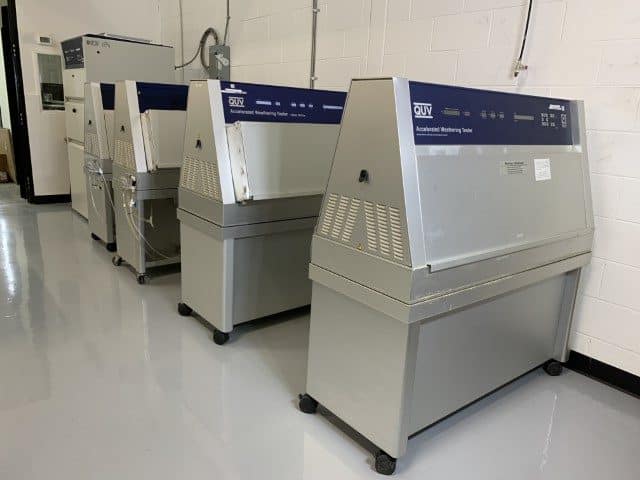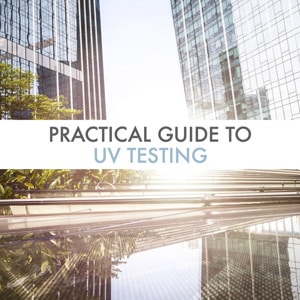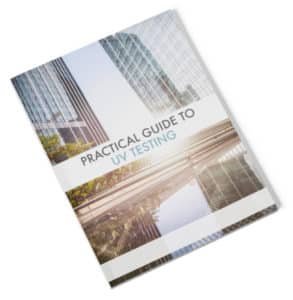ASTM D4329
Standard Practice for Fluorescent Ultraviolet (UV) Lamp Apparatus Exposure of Plastics
ASTM D4329 tests fluorescent UV exposure of plastics. It covers specific procedures and test conditions based on practices ASTM G151 as well as ASTM G154. This test method also covers the preparation of test specimens, the test conditions best suited for plastics, and the evaluation of test results. ASTM D4329 testing services available at Micom Laboratories as part of the polymer test services.
ASTM D4329 use and factors to be considered
Polymers can have their mechanical, electrical and optical properties significantly altered when exposed under outdoor conditions such as light, heat and water. This method is intended to prompt property changes associated with end-use conditions, including the effects of daylight, moisture in addition to heat. The simulation of the deterioration provoked by localized weather, such as, atmospheric pollution, biological attack, and saltwater exposure is not intended by the exposure used in this practice. For a combination of fluorescent light exposure and salt water, you should consider ASTM D5894.

Typical Experimental parameters for ASTM D4329 testing
Number of specimens/products: At least three replicate specimens.
Size and shape: Will be determined by the specifications of the test method used to gauge the effects of the exposure on the samples. It is advised that specimen be sized to fit specimen holders, when possible. For specimens made of insulating materials, for instance foams, maximum thickness is 20 mm to allow proper heat transfer for condensation.
The irradiance level in W/(m2nm): To be specified, but typically from 0,49 to 1,55 W/(m2nm).
Lamp type: UVB-313 and UVA-340 (most common)
Exposure duration: To be specified
Exposure cycle:
- Cycle A (general use)
- Cycle B (automotive use)
- Cycle C (polymer building products)
Should you need guidance in deciding which exposure cycle or other test condition should be used for your precise needs, please feel free to contact us.
If you have any other question about the ASTM D4329 test or if you would like to speak to a testing professional at Micom Laboratories to discuss a custom test for your specific product, we invite you to contact us today. It will be our pleasure to talk to you and help you with the ASTM D4329 test.
If you are looking for additional information related to ASTM D4329, we invite you to read more on Xenon arc testing and UV testing.
Practical UV Testing Guide
Sunlight exposure can have harmful impacts on carbon-based
materials such as coatings, polymers, textiles, and many others.
Learn more about our in-laboratory UV testing process in this guide.



 A free eBook to help you better safeguard your products from UV damage.
A free eBook to help you better safeguard your products from UV damage.